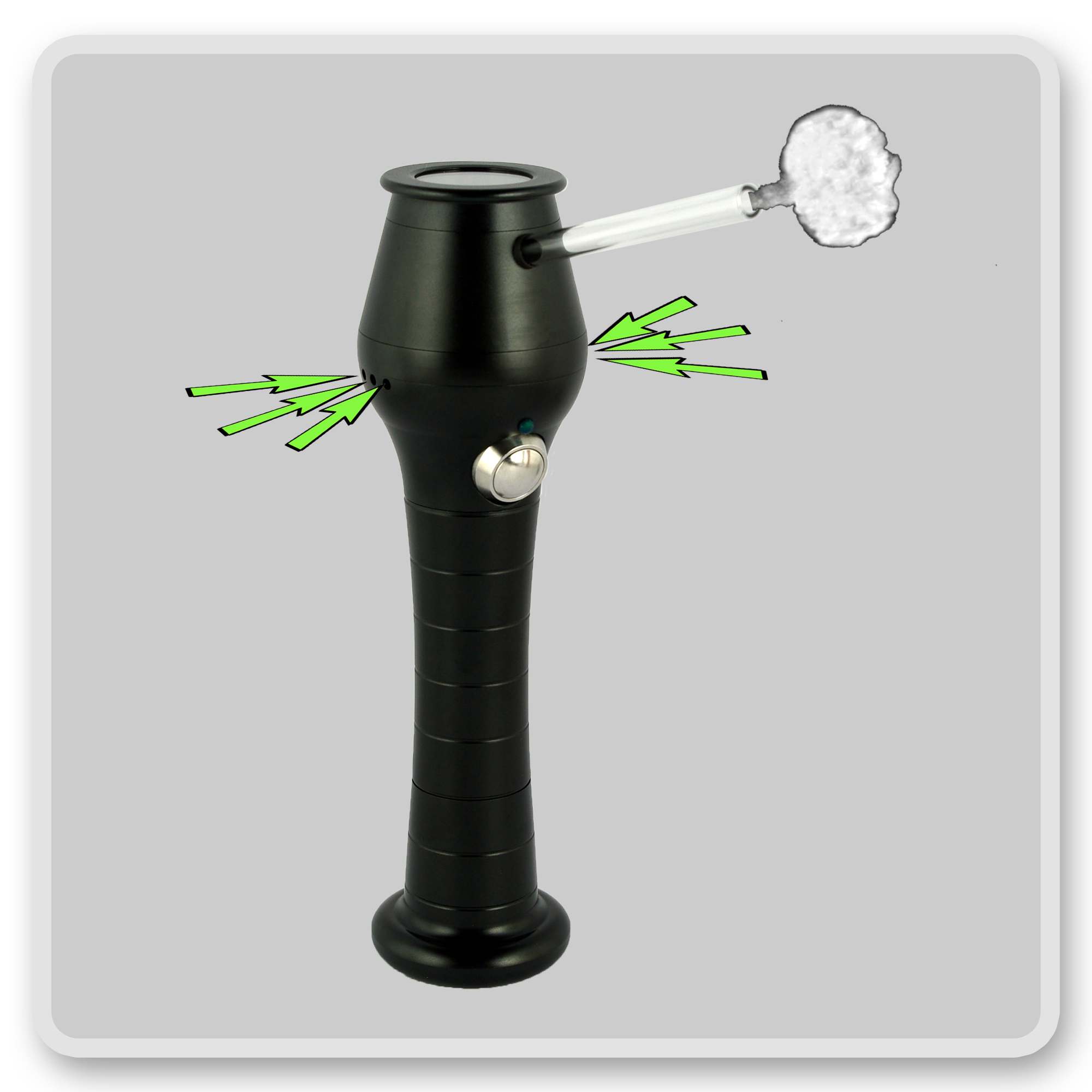Yes; I think you've summed it up quite nicely

Is the flashlight component of the vape your own design or are you repurposing/integrating an already available light into your vaporizer?
I'm interested in what you have said about your batteries. What makes these particular cells that you are using in your vaporizer any different or better than say, an NCR18650A/B cell from panasonic? How will the user go about replacing them once they have reached the end of their useful life? Is there a facility for charging the cells inside the device? And finally, is the protection circuitry integrated directly into the cells themselves or the vaporizer?
Thanks for being so open about your vaporizer and taking part in the community, it goes a long way for the skeptic in me. Hope to see you enjoy success with your vaporizer!
Greetings CentiZen, thanks for your insightful questions.
Is the flashlight component of the vape your own design or are you repurposing/integrating an already available light into your vaporizer?
There is no flashlight component to this vape. This vape looks like a flashlight purely because of the streamline design aspect of it that makes it ergonomic and comfortable to use. We designed this vape so its comfortable for single hand use (left or right hand). When you hold one in hand, the best way to describe it is as if you are holding a slender champaign glass in your hand, and as opposed to taking a sip once in a while, you'd bring it close to your mouth for a puff through the glass draw tube.
I'm interested in what you have said about your batteries. What makes these particular cells that you are using in your vaporizer any different or better than say, an NCR18650A/B cell from panasonic?
What sets the cells that we use apart from, lets say your Panasonic
NCR18650A/Bcell, is first of all, the chemical composition of the battery itself. The battery we have chosen to power the FlashVAPE is a Valence LiFeMgPo4
(lithium iron magnesium phosphate) cell, which is amongst the safest, most stable of any Li-ion batteries on the market today. This can be confirmed with a little research into li-ion battery varieties. What this means is that this cell is chemically very stable at high discharge rates (2+C stable discharge and upto 3+C pulse discharge rate), without the risk of exploding or giving any gaseous discharge. You can explore the safety aspects of this type of cell on Valence's website:
http://valence.com. You can literally short the battery with a copper wire, and the wire will burn red hot, but the battery will be fine... and kids, please don't try this at home... you'll likely burn down the house, but the battery will probably still be ok

Secondly, this particular cell is rated at 3.2V operating voltage, as opposed to 3.7V for regular Li-ion 18650 cells. Our chargers are specially made to matched to this voltage, with cut-off at 3.65V. Please dont use any other battery in the FlashVAPE, or charge our batteries with any other chargers. The battery itself is self-regulated with cut-off below 2V. This battery has a rated life cycle of >2000 (100% DOD) to 80% capacity. Which means that you can recharge it over 2000 times before it will drop to below 80% of its rated full capacity (you can probably still use it a whole lot longer after 2000 charges!).
Valence LiFeMgPo4 cells power electric vehicles all over the world, its the cell powering the SEGWAY, and it is the only cell we find good enough for the FlashVAPE.
When selecting the cell for the FlashVAPE, we tested over 20 different li-ion batteries. With safety first and foremost on our minds, second only to performance and longevity of use, we went with this Valence cell. Although there are lower priced options available, we feel that the Valence cell is the right choice when you combine all these factors.
How will the user go about replacing them once they have reached the end of their useful life? Is there a facility for charging the cells inside the device? And finally, is the protection circuitry integrated directly into the cells themselves or the vaporizer?
When replacement batteries are required, they are available from our website or through one of our authorized distributors. We keep the batteries reasonably priced at $10 each. We feel you shouldn't have to pay an arm and a leg for specialty batteries. Why not have a couple spares?

but anyhow, at over 2000+ charge cycles each battery, the 2 that comes with each FlashVAPE should last you a while

There is no facility for charging the cell inside the device currently. This one is on our to-do list of future improvements.
As mentioned earlier, the cell is equipped with a built in cut-off regulator protection curcuit. However, with having a main power on/off switch built into the base of the vape, so accidental power-on situations are easily avoided, even after use















